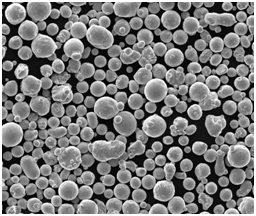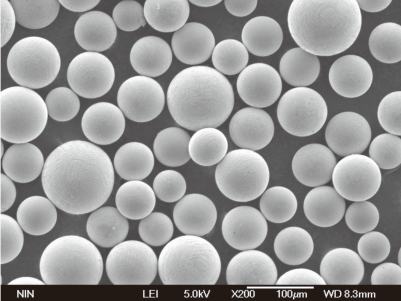مرحباً بك في عالم نظام الطباعة ثلاثي الأبعاد EB! إذا كنت تغوص في هذا المجال، فمن المحتمل أنك تسعى لفهم ما الذي يجعل الطباعة ثلاثية الأبعاد بتقنية EB، وكيف تتراكم مقابل التقنيات الأخرى، وما هي المواد المحددة الأنسب لمشاريعك. دعونا نستكشف هذه التقنية الرائعة بعمق، ونغطي كل شيء بدءًا من أساسياتها إلى التفاصيل الدقيقة للمساحيق المعدنية، ولماذا قد تكون هذه التقنية هي التي تغير قواعد اللعبة التي تبحث عنها.
نظرة عامة على نظام الطباعة ثلاثية الأبعاد EB
الطباعة ثلاثية الأبعاد بالحزمة الإلكترونية (EB)، والمعروفة أيضًا باسم ذوبان الحزمة الإلكترونية (EBM)، هي عملية تصنيع مضافة متقدمة تستخدم شعاع إلكتروني عالي الطاقة لصهر المساحيق المعدنية ودمجها طبقة تلو الأخرى، مما يخلق أشكالاً هندسية معقدة بدقة عالية وخصائص مواد ممتازة. وخلافاً للطرق التقليدية، تسمح الطباعة ثلاثية الأبعاد باستخدام تقنية EB 3D بإنشاء تصميمات معقدة يستحيل أو يكون إنتاجها مكلفاً للغاية.
التفاصيل الرئيسية:
- التكنولوجيا: التصنيع الإضافي
- العملية: الصهر بالحزمة الإلكترونية
- المواد: المساحيق المعدنية في المقام الأول
- التطبيقات: صناعة الطيران والفضاء والزراعات الطبية والسيارات والأدوات وغيرها
- المزايا: دقة عالية، وأشكال هندسية معقدة، وخصائص مواد فائقة
- القيود: تكلفة أولية عالية، وخيارات مواد محدودة، وتتطلب بيئة فراغية

أنواع مساحيق المعادن وخصائصها للطباعة ثلاثية الأبعاد بتقنية EB
يعد اختيار المسحوق المعدني المناسب أمرًا حاسمًا لنجاح الطباعة ثلاثية الأبعاد بتقنية EB. فيما يلي جدول تفصيلي لنماذج محددة من المساحيق المعدنية وتركيباتها وخصائصها الرئيسية.
| نموذج المسحوق المعدني | التركيب | الخصائص | صفات |
|---|---|---|---|
| Ti-6Al-4V | Ti-6Al-4V | قوة عالية وخفيفة الوزن | تستخدم على نطاق واسع في صناعة الطيران والغرسات الطبية |
| انكونيل 718 | ني-كر-في | مقاومة درجات الحرارة العالية | مناسبة لشفرات التوربينات والمكونات عالية الضغط |
| CoCrMo | كو-كر-مو | مقاومة ممتازة للتآكل | مثالية لغرسات الأسنان وتقويم العظام |
| فولاذ مقاوم للصدأ 316L | الحديد والكروم والنيكل والمعادن | مقاومة للتآكل | تُستخدم في التطبيقات البحرية والطبية |
| AlSi10 ملغ | Al-Si-Mg | خفة الوزن وخصائص حرارية جيدة | شائعة في صناعات السيارات والفضاء |
| فولاذ مارينج (1.2709) | حديد-ني-مو-كو | قوة عالية، صلابة جيدة | تُستخدم للأدوات والأجزاء عالية الأداء |
| النحاس (النحاس) | نحاس نقي | توصيل حراري وكهربائي ممتاز | تطبيقات في الإلكترونيات والمبادلات الحرارية |
| النيوبيوم (Nb) | النيوبيوم النقي | درجة انصهار عالية، ليونة جيدة | تُستخدم في الموصلات الفائقة والمكونات الفضائية |
| التنتالوم (Ta) | التنتالوم النقي | مقاومة للتآكل، ودرجة انصهار عالية | مناسبة لمعدات المعالجة الكيميائية |
| هاستيلوي إكس | Ni-Cr-Fe-Mo | مقاومة للأكسدة وقوة عالية | مثالية لمحركات التوربينات الغازية والأفران الصناعية |
تطبيقات نظام الطباعة ثلاثي الأبعاد EB
إن القدرات الفريدة للطباعة ثلاثية الأبعاد بتقنية EB تجعلها مناسبة لمجموعة متنوعة من التطبيقات عالية الأداء. لنلقِ نظرة على بعض الاستخدامات الأساسية لهذه التقنية.
| طلب | الصناعة | حالة الاستخدام |
|---|---|---|
| مكونات الفضاء الجوي | الفضاء | شفرات التوربينات، والمكونات الهيكلية |
| الغرسات الطبية | الطبية | غرسات الورك والركبة، والأطراف الصناعية للأسنان |
| قطع غيار السيارات | السيارات | مكونات المحرك، والهياكل خفيفة الوزن |
| الأدوات والقوالب | التصنيع | قوالب الحقن وأدوات الصب بالقالب |
| المبادلات الحرارية | الإلكترونيات | حلول التبريد الفعالة |
| المواد فائقة التوصيل | الطاقة | المغناطيسات والمكونات فائقة التوصيل |
| معدات المعالجة الكيميائية | صناعي | مكونات مقاومة للتآكل |
المواصفات والمقاسات والدرجات والمعايير
يعد فهم مواصفات مساحيق المعادن وأحجامها ودرجاتها ومعاييرها أمرًا ضروريًا لضمان التوافق والأداء في الطباعة ثلاثية الأبعاد باستخدام تقنية EB.
| المسحوق المعدني | نطاق حجم الجسيمات | الصف | المعايير |
|---|---|---|---|
| Ti-6Al-4V | 15-45 ميكرومتر | الصف الخامس | ASTM F2924 |
| انكونيل 718 | 15-53 ميكرومتر | AMS 5662 | ASTM B637 |
| CoCrMo | 10-45 ميكرومتر | ASTM F75 | ASTM F1537 |
| فولاذ مقاوم للصدأ 316L | 15-45 ميكرومتر | 316 لتر | ASTM A276 |
| AlSi10 ملغ | 20-63 ميكرومتر | DIN 3.2381 | ISO 3522 |
| فولاذ مارينج (1.2709) | 15-45 ميكرومتر | 1.2709 | AMS 6520 |
| النحاس (النحاس) | 10-45 ميكرومتر | Cu-ETP | ASTM B170 |
| النيوبيوم (Nb) | 20-60 ميكرومتر | R04200 | ASTM B392 |
| التنتالوم (Ta) | 15-45 ميكرومتر | R05200 | ASTM B365 |
| هاستيلوي إكس | 15-53 ميكرومتر | UNS N06002 | ASTM B572 |






تفاصيل الموردين والأسعار
يعد العثور على المورد المناسب أمرًا بالغ الأهمية للحفاظ على جودة واتساق مواد الطباعة ثلاثية الأبعاد الخاصة بك. فيما يلي قائمة بالموردين ذوي السمعة الطيبة مع تفاصيل أسعارهم.
| المورد | المسحوق المعدني | السعر (بالكيلوغرام) | موقع إلكتروني |
|---|---|---|---|
| المساحيق المتقدمة | Ti-6Al-4V، Ti-6Al-4V، Inconel 718 | $300 – $500 | Advancedpowders.com |
| مواد ساندفيك | الفولاذ المقاوم للصدأ 316L، AlSi10Mg | $200 – $400 | الصفحة الرئيسية.ساندفيك |
| تكنولوجيا النجار | CoCrMo، فولاذ مغلف | $350 – $600 | cartech.com |
| مضافات GKN | النحاس، النيوبيوم | $150 – $350 | gknadditive.com |
| تقنية LPW | التنتالوم، هاستيلوي X | $400 – $700 | lpwtechnology.com |
مقارنة إيجابيات وسلبيات الطباعة ثلاثية الأبعاد من EB
من المهم الموازنة بين مزايا وقيود الطباعة ثلاثية الأبعاد بتقنية EB 3D مقارنةً بتقنيات التصنيع المضافة الأخرى. إليك مقارنة مفصلة.
| أسبكت | الطباعة ثلاثية الأبعاد EB | مقارنة بالطرق الأخرى |
|---|---|---|
| الدقة | عالية | على غرار SLM، أفضل من FDM |
| خواص المواد | متفوقة | أفضل من معظم تقنيات AM |
| السرعة | معتدل | أسرع من SLS، وأبطأ من DMLS |
| التكلفة الأولية | عالية | أعلى من SLM وFDM |
| التكلفة التشغيلية | معتدل | مماثل لتصنيع الآلة الآلية ذاتية التسليح، أقل من DMLS |
| تعقيد التصاميم | عالية جداً | أفضل من آلة التصنيع الآلي المباشر، ويمكن مقارنتها بآلة تشكيل الألياف البصرية |
| الاختيارات المادية | محدودة | أكثر تقييدًا من SLM وDMLS |
| المعالجة اللاحقة | الحد الأدنى | أقل من SLS، على غرار DMLS |
| متطلبات التفريغ | نعم | فريد من نوعه في EB، غير مطلوب في SLM/FDM |
تكوين نظام الطباعة ثلاثية الأبعاد EB
تتضمن تركيبة نظام الطباعة ثلاثية الأبعاد EB العديد من المكونات الرئيسية التي يلعب كل منها دورًا حيويًا في العملية.
- مدفع أشعة الإلكترون: توليد شعاع الإلكترون لصهر المسحوق المعدني.
- غرفة تفريغ الهواء: يحافظ على بيئة مضبوطة وخالية من الملوثات.
- موزع البودرة: يضمن التوزيع المتساوي للمسحوق المعدني.
- بناء المنصة: يدعم الجزء الذي تتم طباعته ويتحرك أثناء إضافة الطبقات.
- نظام التحكم: يدير عملية الطباعة بالكامل، بدءًا من التحكم في الشعاع وحتى نشر المسحوق.
خصائص نظام الطباعة ثلاثية الأبعاد EB
يُعدّ فهم الخصائص الفريدة للطباعة ثلاثية الأبعاد الإلكترونية أمرًا ضروريًا للاستفادة من إمكاناتها الكاملة.
- كثافة طاقة عالية: يمكن لشعاع الإلكترون صهر المعادن عالية الانصهار بدقة.
- بيئة الفراغ: ضروري لمنع الأكسدة وضمان سلامة المواد.
- دمج طبقة تلو الأخرى: تمكين إنشاء أشكال هندسية معقدة بتفاصيل دقيقة.
- الحد الأدنى من الإجهاد الحراري: يقلل من الالتواء والإجهادات المتبقية في الأجزاء المطبوعة.
مزايا نظام الطباعة ثلاثية الأبعاد EB
لماذا يجب أن تفكر في الطباعة ثلاثية الأبعاد من EB؟ إليك بعض الأسباب المقنعة:
- خصائص المواد المتفوقة: يحقق خواص ميكانيكية ممتازة وتجانس المواد.
- الأشكال الهندسية المعقدة: قادرة على إنتاج تصميمات معقدة وهياكل داخلية.
- تقليل النفايات: تستخدم الكمية الضرورية فقط من المواد، مما يقلل من النفايات.
- معالجة لاحقة أقل: يتطلب عادةً أعمال تشطيب أقل مقارنةً بالطرق الأخرى.
حدود نظام الطباعة ثلاثي الأبعاد EB
لا توجد تقنية بدون سلبيات. وفيما يلي بعض القيود التي يجب مراعاتها:
- تكلفة مبدئية عالية: قد تكون تكاليف المعدات والإعداد باهظة بالنسبة للشركات الصغيرة.
- القيود المادية: خيارات مواد أقل مقارنةً بطرق AM الأخرى.
- متطلبات التفريغ: يمكن أن تؤدي الحاجة إلى بيئة تفريغ الهواء إلى تعقيد الإعداد.
- السرعة: أبطأ من بعض طرق الطباعة ثلاثية الأبعاد الأخرى، خاصة بالنسبة للأجزاء الكبيرة.

أسئلة وأجوبة
| سؤال | الإجابة |
|---|---|
| ما هي الطباعة ثلاثية الأبعاد الإلكترونية؟ | عملية تصنيع مضافة عالية الطاقة باستخدام أشعة الإلكترون لصهر المساحيق المعدنية طبقة تلو الأخرى. |
| ما هي الصناعات التي تستخدم الطباعة ثلاثية الأبعاد الإلكترونية؟ | الصناعات الفضائية والطبية والطبية والسيارات والصناعات التحويلية بشكل رئيسي. |
| ما هي المواد التي يمكن استخدامها؟ | مساحيق معدنية في المقام الأول مثل Ti-6Al-4V، وInconel 718، والفولاذ المقاوم للصدأ 316L. |
| كيف يمكن مقارنتها مع SLM؟ | توفر خصائص مواد فائقة ودقة فائقة ولكن لديها خيارات مواد أقل. |
| ما هي المزايا الرئيسية؟ | دقة عالية، وخصائص مواد ممتازة، وقدرة على إنشاء أشكال هندسية معقدة. |
| ما هي القيود الرئيسية؟ | التكلفة الأولية المرتفعة، وخيارات المواد المحدودة، ومتطلبات بيئة التفريغ. |
| هل المعالجة اللاحقة مطلوبة؟ | عادةً ما يكون الحد الأدنى مقارنة بالطرق الأخرى مثل SLS وDMLS. |
| ما هي التطبيقات الشائعة؟ | شفرات التوربينات، والزراعات الطبية، ومكونات المحركات، والأدوات. |
| كيف يتم توليد شعاع الإلكترون؟ | باستخدام مدفع شعاع إلكتروني داخل غرفة مفرغة من الهواء. |
| ما هي التكلفة النموذجية لمساحيق المعادن؟ | وتتراوح الأسعار من $150 إلى $700 للكيلوغرام الواحد، حسب المادة. |
خاتمة
يبرز نظام الطباعة ثلاثية الأبعاد بتقنية EB في مجال التصنيع الإضافي لقدرته على إنتاج أجزاء معدنية معقدة وعالية الجودة بدقة وخصائص مواد ممتازة. في حين أنه يأتي مع تكاليف أعلى وبعض القيود المادية، فإن الفوائد التي يقدمها من حيث تقليل النفايات والحد الأدنى من المعالجة اللاحقة والخصائص الميكانيكية الفائقة تجعله خيارًا جذابًا للصناعات التي يكون فيها الأداء والجودة أمرًا بالغ الأهمية. سواء كنت تعمل في مجال الطيران أو المجال الطبي أو أي مجال آخر عالي التقنية، فإن فهم الفروق الدقيقة في الطباعة ثلاثية الأبعاد بتقنية EB يمكن أن يساعدك على اتخاذ قرارات مستنيرة بشأن عمليات التصنيع الخاصة بك.

